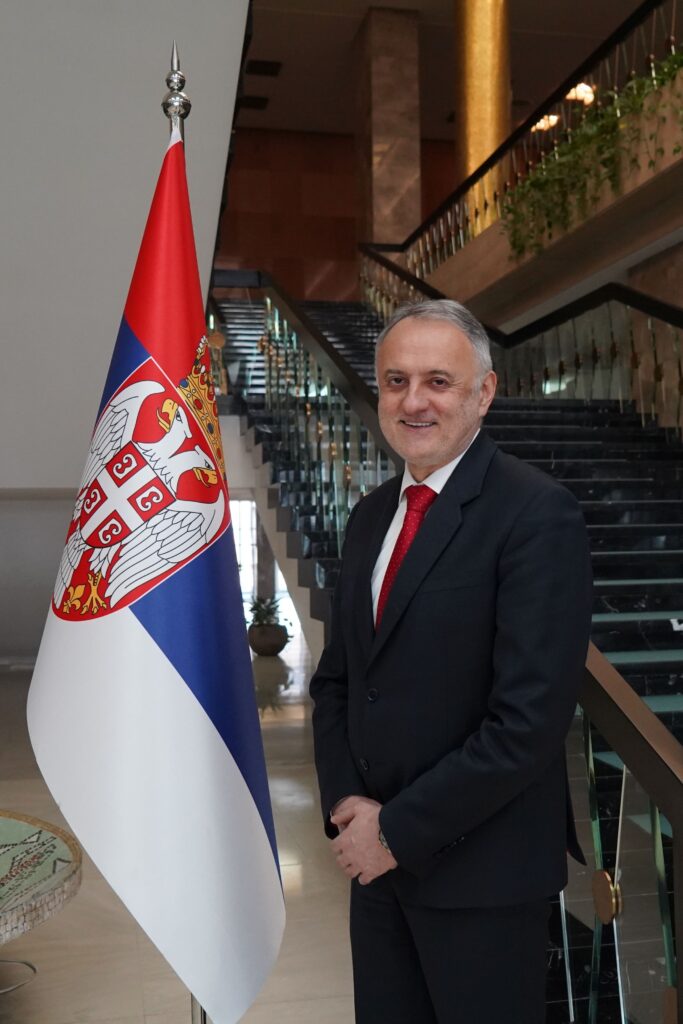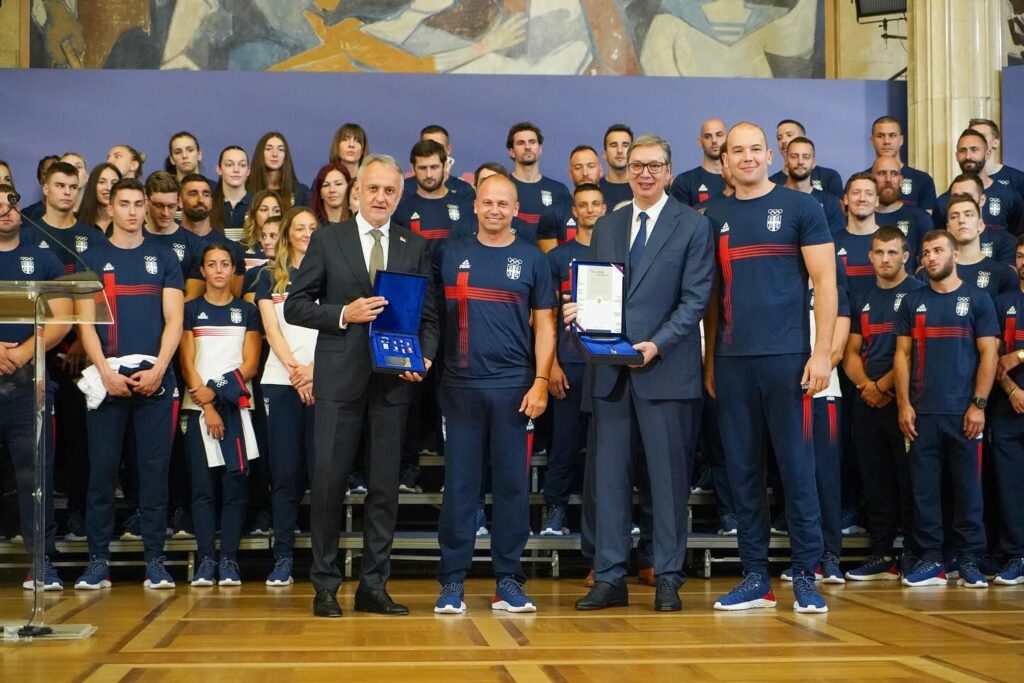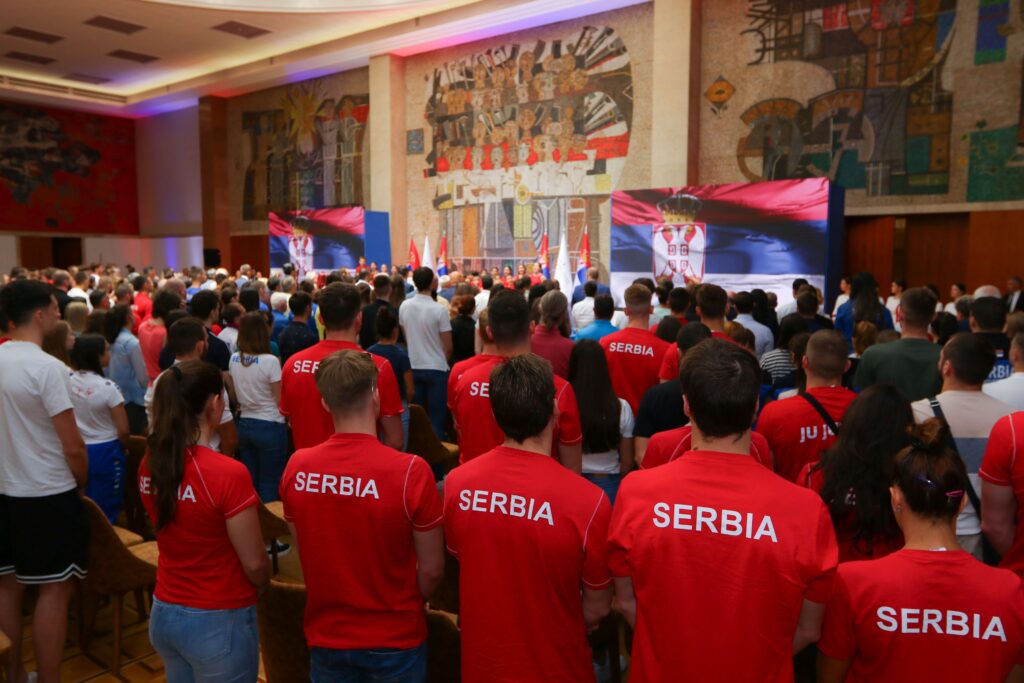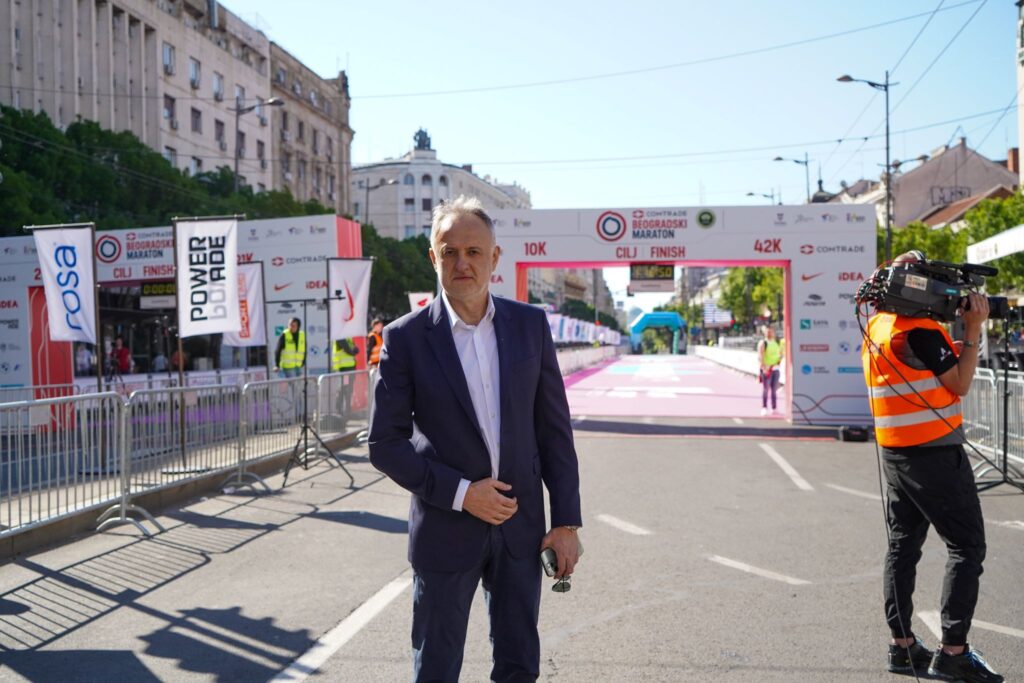Olympic triumphs, sports development, and the vision for 2025
 Serbia’s athletes shone at the Paris Olympics and Paralympics, with Novak Đoković’s gold and the water polo team’s historic triumph among the standout moments. Beyond competition, 2024 saw major sporting events in Serbia, reinforcing its role in global sports. Looking ahead, 2025 will increase investment in athletes, infrastructure, and youth engagement. Minister of Sports Zoran Gajić shares insights on Olympic success, future plans, and key initiatives shaping Serbian sports in this interview.
Serbia’s athletes shone at the Paris Olympics and Paralympics, with Novak Đoković’s gold and the water polo team’s historic triumph among the standout moments. Beyond competition, 2024 saw major sporting events in Serbia, reinforcing its role in global sports. Looking ahead, 2025 will increase investment in athletes, infrastructure, and youth engagement. Minister of Sports Zoran Gajić shares insights on Olympic success, future plans, and key initiatives shaping Serbian sports in this interview.
Which Serbian athletes’ achievements at the Paris Olympics do you consider the most significant, and how would you assess the overall performance of our delegation?
The success of Serbian athletes at the Paris Olympics certainly deserves high praise. Novak Đoković achieved his long-awaited Olympic gold, a moment we had all anticipated. He played with incredible focus and motivation; his victory was a testament to his ability to deliver outstanding results at crucial moments.
The water polo team again made history, securing their third consecutive gold medal. Many doubted their chances, but they performed outstanding, especially in their final victory against Croatia. The support they received from Novak Đoković was a key element in their psychological recovery and motivation, further proving the strength of unity within the team.
Zorana Arunović and Damir Mikec responded to adversity in the best possible way. Although they did not meet expectations in individual events, their gold medal was a testament to their determination and professionalism.
The basketball team fought against giants like the USA, and despite facing challenges, they managed to recover and secure the bronze medal. Coach Pešić once again demonstrated his tactical brilliance.
Aleksandra Perišić’s taekwondo silver medal further highlighted our athletes’ impressive performances in this discipline. This result is particularly significant as it proves that investments in taekwondo have yielded concrete success while media and sporting interest in the discipline continue to grow.
Our athletes also achieved remarkable results in Paralympic sports, winning a total of six medals, including gold for Dragan Ristić. Alongside the Olympic Games, the Paralympic team demonstrated great dedication and excellence, reaffirming their vital role in our sports system.
Looking ahead, investment in sports will continue. Infrastructure development, such as the new training centre in Košutnjak, will improve athlete preparation conditions, paving the way for even more outstanding achievements in future Olympic cycles.
All in all, we represented ourselves in the best possible way, both at the Olympics and the Paralympics, with immense pride in the achievements of our athletes.
 Apart from the Olympic Games, what do you consider the most important sporting moments for Serbia in 2024, and how do they contribute to promoting sports in our country?
Apart from the Olympic Games, what do you consider the most important sporting moments for Serbia in 2024, and how do they contribute to promoting sports in our country?
Beyond the Olympic Games, key sporting events that promoted sports in Serbia in 2024 included major international competitions such as the European Aquatics Championships and the Belgrade Marathon. These events significantly impacted encouraging sports participation and promoting healthy lifestyles.
I am pleased that all competitions were organised according to world-class standards, without incidents, reaffirming Serbia’s commitment to high organisational norms. Adopting the Law on the Ratification of the Council of Europe Conventions, which addresses integrity protection and combating violence in sports, further aligns our procedures with international standards.
These events attract teams and fans worldwide, leaving a positive impression and helping to enhance Serbia’s reputation on the global sports stage.
What are the Ministry of Youth and Sports’ plans for 2025 regarding support for athletes and improving sports infrastructure?
In 2025, the Ministry of Sports will continue funding programmes for national sports federations, training camps for promising athletes, scholarships, national awards, and the development of sports infrastructure. The budget allocated for these programmes has been increased for 2025, ensuring that our national teams and athletes have more significant financial resources to carry out their plans.
Regarding infrastructure, we have plans to construct and revitalise sports facilities, which will be defined after our annual public call for projects, a process the Ministry organises each year.
 You previously announced the construction of the National Sports Museum in Surčin. What stage is this project currently in, and when can we expect its opening?
You previously announced the construction of the National Sports Museum in Surčin. What stage is this project currently in, and when can we expect its opening?
The construction of the National Sports Museum in Surčin is currently in the conceptual design phase and will be further developed this year.
What are the biggest challenges Serbian sports will face in the coming period, and how do you plan to address them?
One of the biggest challenges is undoubtedly the financing of sports clubs, many of which are in a complicated financial situation. We are currently developing a new Sports Development Strategy for 2025–2035, aiming to find solutions to this identified issue.
Another challenge is sports organisations’ insufficiently developed capacities. To address this, we have created a Regulation on Professional Examination Procedures and are preparing to hold the first certification exam at the end of February.
This exam will be mandatory for all those managing programmes in clubs competing in national leagues and for programme coordinators within territorial and national sports federations. Through this initiative, we will significantly improve the planning and structuring of sports organisations while also enhancing the efficiency and transparency of budget allocations for sports development.
 How do you assess the current status of sports among young people in Serbia, and what measures do you plan to take to motivate them further to engage in sports?
How do you assess the current status of sports among young people in Serbia, and what measures do you plan to take to motivate them further to engage in sports?
The current state of sports among young people in Serbia requires improvement, as their habits are increasingly influenced by technology and modern lifestyles. We plan to increase youth participation in physical activity by developing accessible sports infrastructure, including free-to-use facilities and open sports grounds.
Today’s young people are shifting away from organised sports and focusing more on recreational and entertainment-based activities. In drafting our Sports Development Strategy, we are considering their preferences and interests, working closely with the Ministry of Education and other relevant institutions to create modern opportunities for physical activity.
Newer sports, such as skateboarding, which won gold at the Tokyo Olympics, demonstrate how attitudes toward sports are evolving. Our goal is to ensure that sports become an integral part of young people’s free time and are adapted to contemporary trends.
Given your extensive experience in volleyball, how do you see the future of this sport in Serbia, and what steps is the Ministry taking to support its development?
Serbia is currently making significant investments in a major volleyball-related project—the construction of the National Volleyball Training Centre. If we implement our plans successfully, volleyball will experience a renaissance in Serbia. This facility will allow us to design and establish a unique volleyball development system, ensuring a strong foundation for the sport’s future growth.